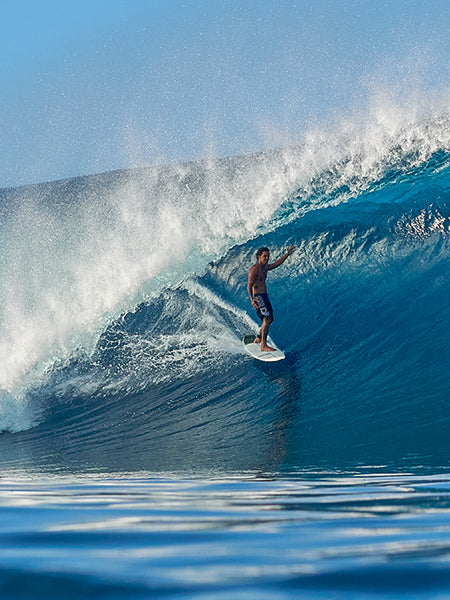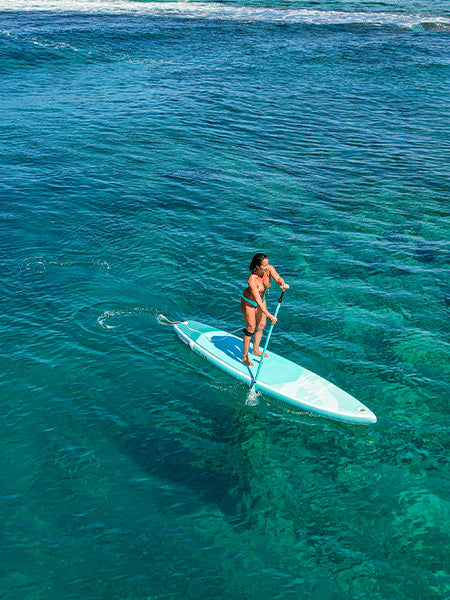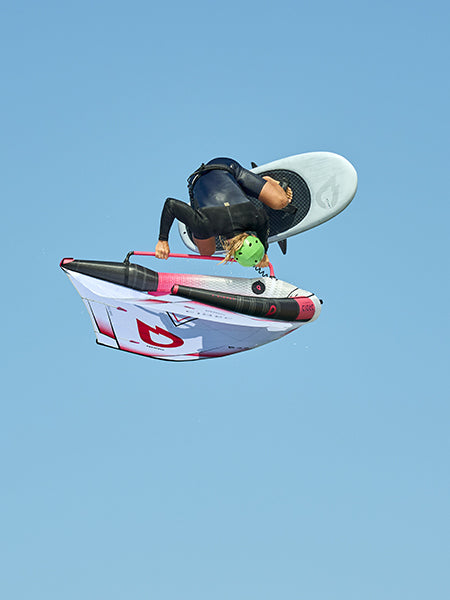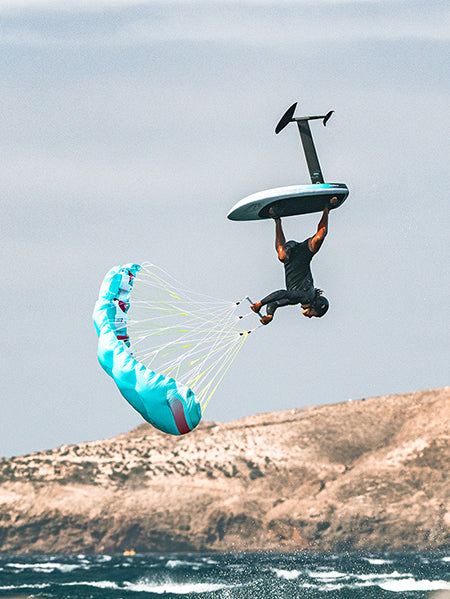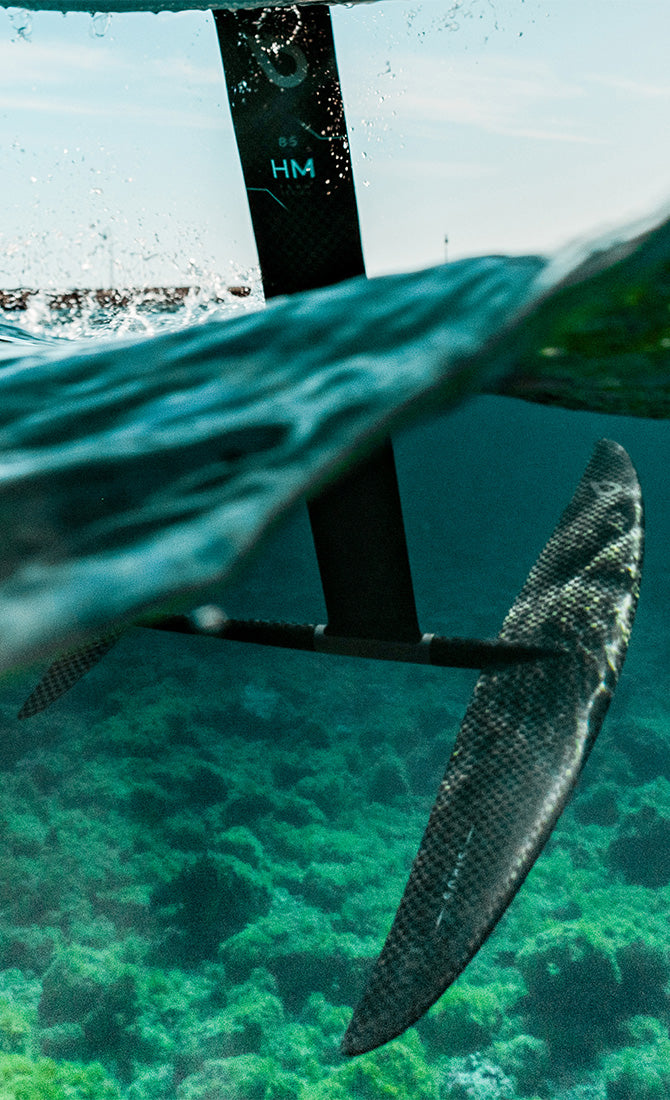Not touch the water with your wing
It’s your first wing foiling session. You managed to get on your knees and to take the handles of the wing (see our Basic How To ;)) but then it all goes wrong. The lower tip of your wing touches the water, you can’t recover, you fall and you have to start all over again. Be doubly reassured! Firstly because everyone goes through this stage and secondly, there is a simple trick to keep your wing away from the water.

When at standstill, on your knees or when standing up, the central batten of your wing should remain parallel to the wind. If the batten of your wing is in the axis of the wind, your wing will naturally place itself in an umbrella position above your head, therefore at a safe distance from the water. This will also allow you to balance yourself by sustaining yourself to the wing. As soon as you offset your hands from this parallel line with the wind, by moving your front hand forward and lower for example, the batten forms an angle with the wind, which causes the wing to tilt vertically, causing its lower tip to touch the water and making you fall.
Remember that when at standstill your batten must be in the axis of the wind and that to move forward you must lower your front hand (which makes your wing tilt vertically). If you are out of balance, do the opposite, pull your front hand up (and/or let the back handle go) to put the central batten back in the wind and the wing in the umbrella position.
Below we can clearly see the wingfoiler on the left which is still at standstill with the central batten in the axis of the wind. The wing is in the umbrella position which helps the foiler to balance himself. In this position the wing is at a good distance from the water. On the right, the wingfoiler picks up speed by giving an angle to the batten (relative to the wind), which causes the wing to gradually tilt vertically.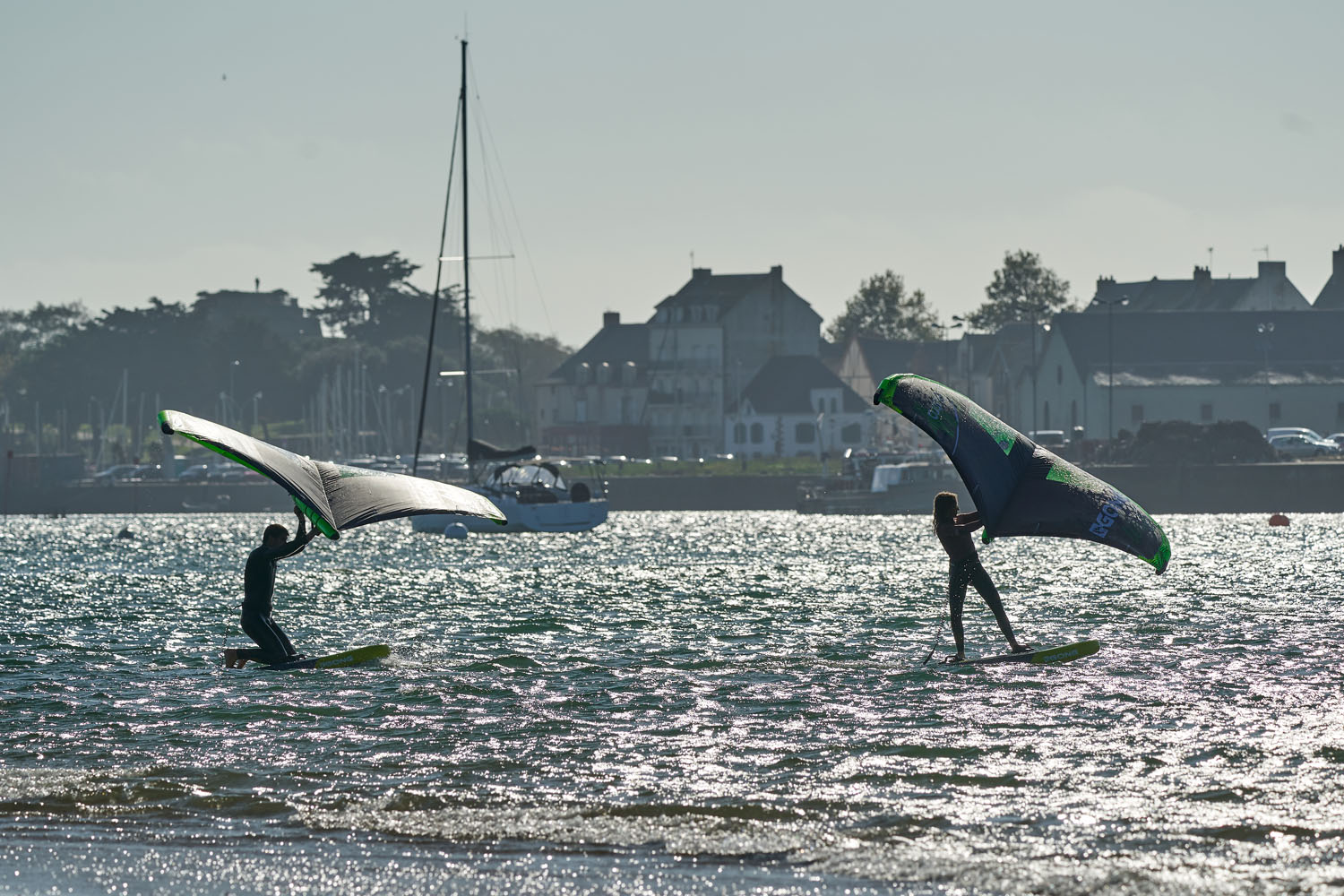
Below, standing up but still not moving forward at this point, the central batten is parallel to the wind to keep the wing in the umbrella position and to keep balance easily.

Below the two wingfoilers are at cruising speed. The hands are therefore completely offset from the wind. We are in opposition to the wind and the wing has tilted completely vertically but there’s no risk of touching the water at this point since you are up in the air and using wings of a reduced wingspan 😉
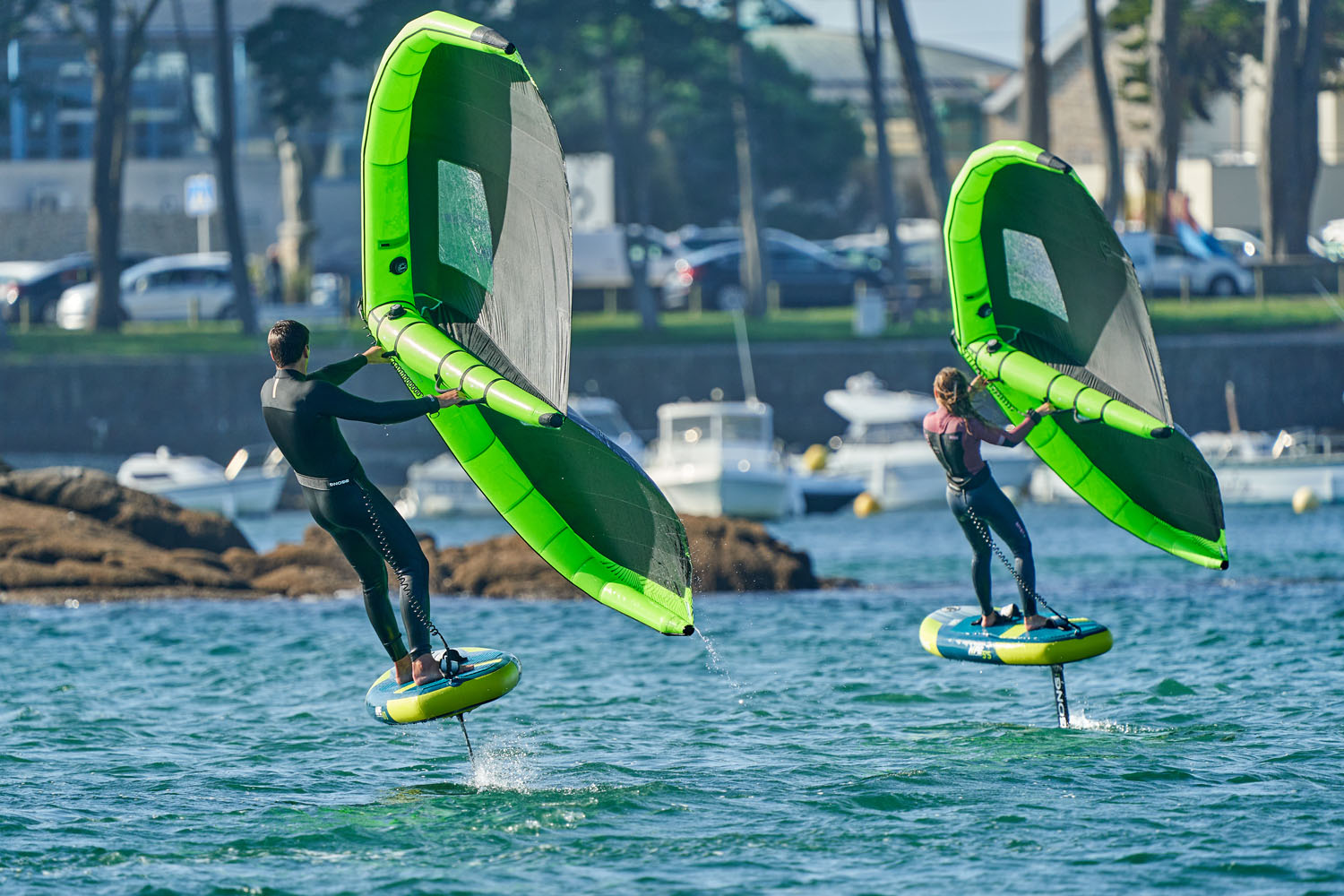
Note that the position to keep the wing‘s central batten parallel to the wind is not the most comfortable. If you’re comfortable, it’s because you’re doing things wrong ? In addition, keeping the batten in the axis of the wind while moving it forward to bear down or moving it back to luff is a bit complicated, but it comes quick. Learn to navigate like this. It will save you a lot of time afterwards.
